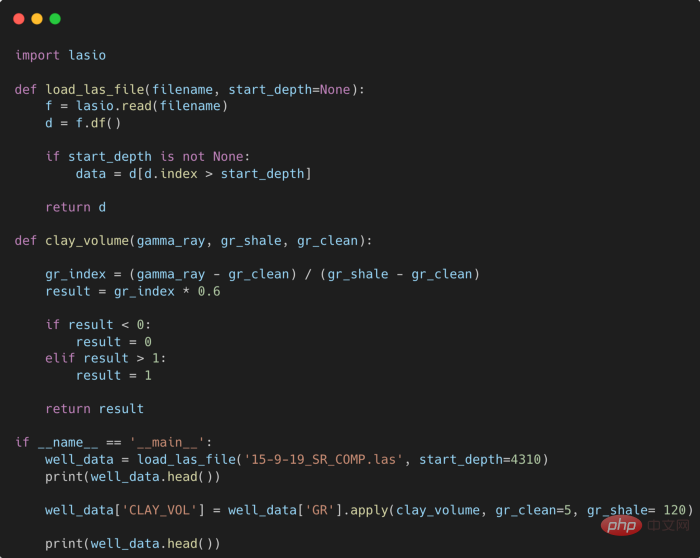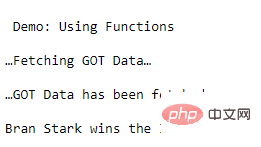 Database
Database Mysql Tutorial
Mysql Tutorial Introduction to functional differences and usage tips of Oracle stored procedures and functions
Introduction to functional differences and usage tips of Oracle stored procedures and functions
The functional differences and usage tips of Oracle stored procedures and functions
In Oracle database, stored procedures and functions are two important database objects, both of which can be used To encapsulate SQL statements and business logic to improve the efficiency and security of database operations. However, there are some differences in functionality and usage between stored procedures and functions, which are detailed below and provide some code examples.
Functional differences:
- Stored procedures:
Stored procedures are a set of predefined SQL statements and business logic that can receive parameters and Return results. Stored procedures are usually used to encapsulate complex business logic and can implement functions such as data processing and control flow. Stored procedures can contain data operation statements (such as SELECT, INSERT, UPDATE, DELETE) and control statements (such as conditional judgments, loops, etc.). - Function:
The function is also a set of predefined SQL statements and business logic, but the function has a return value and must return a value. Functions are usually used to complete specific calculations or data processing operations and can be called by other programs or SQL statements. Functions can return different types of results such as scalar values (such as numbers, strings), sets, or tables.
Tips for using:
-
Tips for using stored procedures:
Stored procedures can improve the efficiency and consistency of database operations , especially suitable for large amounts of data processing and business logic encapsulation. When writing a stored procedure, you can pay attention to the following points:CREATE OR REPLACE PROCEDURE proc_example(parameter1 IN VARCHAR2, parameter2 OUT NUMBER) IS BEGIN -- 逻辑代码 END;
- Use the appropriate parameter transfer method, and you can use different types of parameters such as IN, OUT, IN OUT, etc.
- For frequently called business logic, you can encapsulate it in a stored procedure to improve the reuse rate.
- Use exception handling mechanisms (such as BEGIN...EXCEPTION...END) to handle errors and exceptions to ensure the stability of stored procedures.
-
Tips for using functions:
Functions can easily complete some specific calculations or data processing, improving the reusability and readability of the code. When writing a function, you can pay attention to the following points:CREATE OR REPLACE FUNCTION func_example(parameter1 IN NUMBER) RETURN VARCHAR2 IS result VARCHAR2(100); BEGIN -- 逻辑代码 RETURN result; END;
- When designing a function, you must clarify the input parameters and return value of the function to ensure that the purpose of the function is clear.
- Functions should have good testability and maintainability, and avoid overly complex logic.
- Appropriate use of function return values can achieve more flexible data processing and calculations.
To sum up, stored procedures and functions have different functions and usage scenarios in Oracle database. Developers can choose appropriate objects according to specific needs to implement database operations and business logic processing. Through reasonable design and coding, the functions provided by stored procedures and functions can be better utilized to improve the efficiency and maintainability of database operations.
The above is the detailed content of Introduction to functional differences and usage tips of Oracle stored procedures and functions. For more information, please follow other related articles on the PHP Chinese website!
 提高 Python 代码可读性的五个基本技巧Apr 12, 2023 pm 08:58 PM
提高 Python 代码可读性的五个基本技巧Apr 12, 2023 pm 08:58 PMPython 中有许多方法可以帮助我们理解代码的内部工作原理,良好的编程习惯,可以使我们的工作事半功倍!例如,我们最终可能会得到看起来很像下图中的代码。虽然不是最糟糕的,但是,我们需要扩展一些事情,例如:load_las_file 函数中的 f 和 d 代表什么?为什么我们要在 clay 函数中检查结果?这些函数需要什么类型?Floats? DataFrames?在本文中,我们将着重讨论如何通过文档、提示输入和正确的变量名称来提高应用程序/脚本的可读性的五个基本技巧。1. Comments我们可
 CRPS:贝叶斯机器学习模型的评分函数Apr 12, 2023 am 11:07 AM
CRPS:贝叶斯机器学习模型的评分函数Apr 12, 2023 am 11:07 AM连续分级概率评分(Continuous Ranked Probability Score, CRPS)或“连续概率排位分数”是一个函数或统计量,可以将分布预测与真实值进行比较。机器学习工作流程的一个重要部分是模型评估。这个过程本身可以被认为是常识:将数据分成训练集和测试集,在训练集上训练模型,并使用评分函数评估其在测试集上的性能。评分函数(或度量)是将真实值及其预测映射到一个单一且可比较的值 [1]。例如,对于连续预测可以使用 RMSE、MAE、MAPE 或 R 平方等评分函数。如果预测不是逐点
 详解JavaScript函数如何实现可变参数?(总结分享)Aug 04, 2022 pm 02:35 PM
详解JavaScript函数如何实现可变参数?(总结分享)Aug 04, 2022 pm 02:35 PMjs是弱类型语言,不能像C#那样使用param关键字来声明形参是一个可变参数。那么js中,如何实现这种可变参数呢?下面本篇文章就来聊聊JavaScript函数可变参数的实现方法,希望对大家有所帮助!
 盘点Python内置函数sorted()高级用法实战May 13, 2023 am 10:34 AM
盘点Python内置函数sorted()高级用法实战May 13, 2023 am 10:34 AM一、前言前几天在Python钻石交流群有个叫【emerson】的粉丝问了一个Python排序的问题,这里拿出来给大家分享下,一起学习下。其实这里【瑜亮老师】、【布达佩斯的永恒】等人讲了很多,只不过对于基础不太好的小伙伴们来说,还是有点难的。不过在实际应用中内置函数sorted()用的还是蛮多的,这里也单独拿出来讲一下,希望下次再有小伙伴遇到的时候,可以不慌。二、基础用法内置函数sorted()可以用来做排序,基础的用法很简单,看个例子,如下所示。lst=[3,28,18,29,2,5,88
 学Python,还不知道main函数吗Apr 12, 2023 pm 02:58 PM
学Python,还不知道main函数吗Apr 12, 2023 pm 02:58 PMPython 中的 main 函数充当程序的执行点,在 Python 编程中定义 main 函数是启动程序执行的必要条件,不过它仅在程序直接运行时才执行,而在作为模块导入时不会执行。要了解有关 Python main 函数的更多信息,我们将从如下几点逐步学习:什么是 Python 函数Python 中 main 函数的功能是什么一个基本的 Python main() 是怎样的Python 执行模式Let’s get started什么是 Python 函数相信很多小伙伴对函数都不陌生了,函数是可
 Python面向对象里常见的内置成员介绍Apr 12, 2023 am 09:10 AM
Python面向对象里常见的内置成员介绍Apr 12, 2023 am 09:10 AM好嘞,今天我们继续剖析下Python里的类。[[441842]]先前我们定义类的时候,使用到了构造函数,在Python里的构造函数书写比较特殊,他是一个特殊的函数__init__,其实在类里,除了构造函数还有很多其他格式为__XXX__的函数,另外也有一些__xx__的属性。下面我们一一说下:构造函数Python里所有类的构造函数都是__init__,其中根据我们的需求,构造函数又分为有参构造函数和无惨构造函数。如果当前没有定义构造函数,那么系统会自动生成一个无参空的构造函数。例如:在有继承关系
 Golang函数的类型断言用法介绍May 16, 2023 am 08:02 AM
Golang函数的类型断言用法介绍May 16, 2023 am 08:02 AMGolang的函数类型断言是一个非常重要的特性,它可以让我们在函数中精细地控制变量的类型,从而更加方便地进行数据处理和转换。本文将介绍Golang函数的类型断言用法,希望能够对大家的学习有所帮助。一、什么是Golang函数的类型断言?Golang函数的类型断言可以理解为函数参数中所声明变量的类型具有多态性,这使得一个函数在不同的参数传递下可以灵活
 Python编程:有关函数返回值以及最佳实践基本指导原则Apr 10, 2023 am 11:31 AM
Python编程:有关函数返回值以及最佳实践基本指导原则Apr 10, 2023 am 11:31 AM本篇内容作为以函数为主题的最后一篇,来介绍一下函数返回值以及编写函数的一些基本的最佳实践指导原则。函数输出:返回值函数的返回值是Python领先于竞争对手的东西之一。在大多数其他语言中,函数通常只允许返回一个对象,但是在Python中,你可以返回一个元组——这意味着可以返回任何你想要的东西。这个特性允许程序员编写用其他语言编写的软件要困难得多,或者肯定会更加乏味。我们已经说过,要从函数返回一些东西,我们需要使用return语句,后面跟着我们想要返回的东西。函数体中可以根据需要有多个返回语句。另一


Hot AI Tools

Undresser.AI Undress
AI-powered app for creating realistic nude photos

AI Clothes Remover
Online AI tool for removing clothes from photos.

Undress AI Tool
Undress images for free

Clothoff.io
AI clothes remover

AI Hentai Generator
Generate AI Hentai for free.

Hot Article

Hot Tools

EditPlus Chinese cracked version
Small size, syntax highlighting, does not support code prompt function

SublimeText3 English version
Recommended: Win version, supports code prompts!

MinGW - Minimalist GNU for Windows
This project is in the process of being migrated to osdn.net/projects/mingw, you can continue to follow us there. MinGW: A native Windows port of the GNU Compiler Collection (GCC), freely distributable import libraries and header files for building native Windows applications; includes extensions to the MSVC runtime to support C99 functionality. All MinGW software can run on 64-bit Windows platforms.

SublimeText3 Linux new version
SublimeText3 Linux latest version

SAP NetWeaver Server Adapter for Eclipse
Integrate Eclipse with SAP NetWeaver application server.





